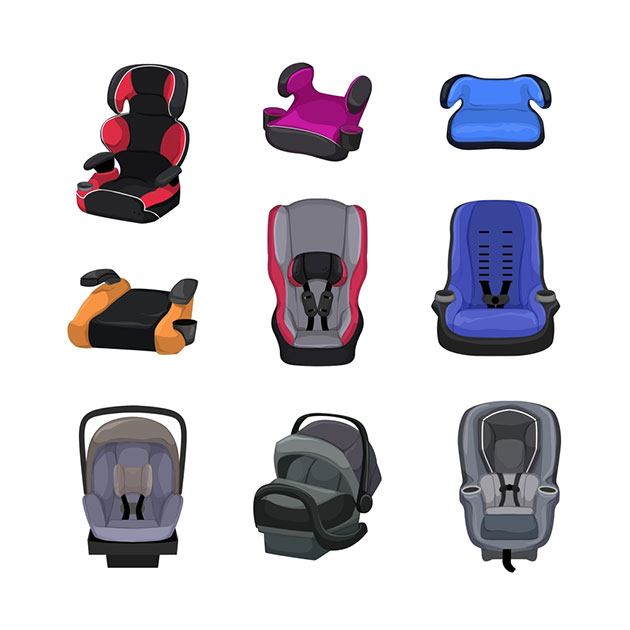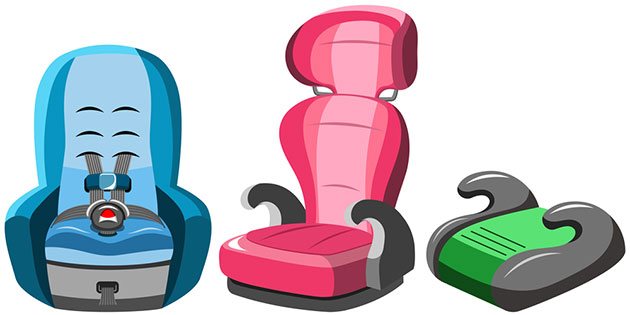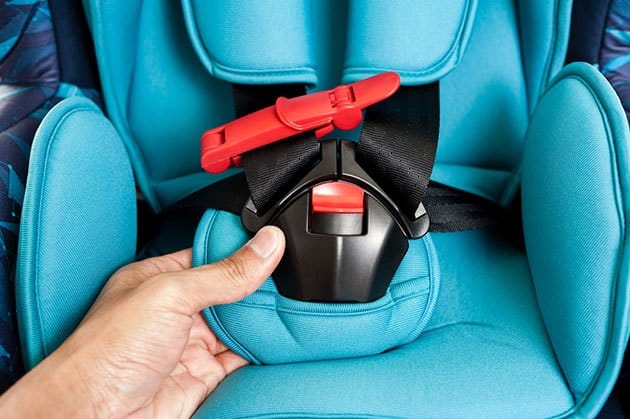If your kiddo has made it to the booster stage, you may wonder what the better choice is:
high back vs backless booster seat?
Although both high back and backless boosters are safe, the ultimate choice will depend on your child's maturity.
In this guide, we talk about the fundamental differences between backless and high back booster seats while tapping into safety considerations and guidelines for using these seats.
More...
Table of Contents
- Types of Booster Seats
- What Do Children Use Before Using a Booster Seat?
- What Do Children Use After Boosters?
- Forward-facing Car Seat vs Belt-positioning Booster Seat: What Are the Differences?
- What is a High Back Booster Seat & When to Use It?
- What is a Backless Booster Seat & When to Use It?
- High Back vs Backless Booster: Similarities & Differences
- FAQs
- Final Words
Types of Booster Seats
There are three types of booster seats:

What Do Children Use Before Using a Booster Seat?
Before using a booster seat, children usually ride in a convertible car seat or a belt-positioning booster seat. Until the age of 5, kids should remain in a 5-point harness child restraint seat as recommended by NHTSA.
A convertible seat is a forward-facing car seat with a higher weight limit and a 5-point harness. Belt-positioning boosters include a three-point or a five-point harness but can later be used with adult seat belts.
Following the NHTSA recommendations is best, as children are safer in the 5-point harness than in a seat belt. The harness helps spread the crash forces evenly, while seat belts have fewer restrain points.
Before your child transitions to a booster seat, make sure they follow the necessary limits:
- A child must be at least 40 pounds before moving on a booster.
- A child needs to be at least five years old.
- A child is ready for a booster if able to sit correctly without unbuckling or slouching.
What Do Children Use After Boosters?
Children should use an adult seat belt after they have matured and completely exceeded a backless booster's weight and height limit. For example, a child is ready for a vehicle seat belt once he reaches a height limit of 4 feet and 9 inches.
Before using vehicle seat belts and boosters, children should pass the five-step test:
Forward-facing Car Seat vs Belt-positioning Booster Seat: What Are the Differences?

Forward facing car seat is a five-point harness seat, suitable to use after a rear-facing seat. Once children surpass a rear-facing seat, they should still be secured with a five-point harness until they reach at least 49 inches and 65 pounds.
There are four types of forward-facing car seats:
Belt-positioning booster is a highback booster suitable for kids weighing over 40 pounds.
Some belt-positioning boosters include a 5-point harness, while others have removable back support. Once the child has reached a five-point harness's weight and height limit, you can easily remove the harness and use the booster with a belt.
Most belt-positioning boosters have taller sides fitted for a big and tall toddler. In addition, a belt-positioning booster offers head and back protection that goes past the child's ears.
What is a High Back Booster Seat & When to Use It?
A highback booster is a tall-sided seat with added back, neck, and head support. Highback boosters should be used after a child has outgrown a forward-facing car seat.
The weight requirements for a highback booster are between 40-120 pounds, while the height limit is up to 4 feet and nine inches.
Thanks to the head support, many highback boosters have an adjustable headrest that offers proper seat belt positioning. The added head support allows kids to ride safely in vehicles with lower head restraint sides. A highback booster is a much safer alternative if your car does not have headrests.
Benefits of highback boosters
Disadvantages of highback boosters
What is a Backless Booster Seat & When to Use It?

A backless booster is a specialized cushioned seat for older children with no back or head support. The backless design raises the child for the appropriate seat and lap belt fit.
A child can use a backless booster car seat once he exceeds the weight and height limit of a forward-facing car seat.
Considering many children reach the maximum weight limit first, it's best to remain in a belt-positioning booster. Many kids do not have the appropriate height necessary for shoulder belt fit.
Many backless boosters have a shoulder belt guide that holds the belt behind the child's shoulder. The shoulder belt fit is suitable for tall children that don't fit in the necessary position.
Benefits of a backless booster
Disadvantages of backless boosters
High Back vs Backless Booster: Similarities & Differences
Safety
Highback boosters and backless boosters share differences in safety design. For example, a child is offered side-impact protection and head and neck support with a highback booster seat.
Many highback boosters include a five-point harness. A five-point harness is recommended for longer use until the child's fourth birthday.
Installing the highback booster is conducted with latch connectors in most cases. The latch systems are more reliable and safer to hold the car seat down in case of a collision.
A backless booster lacks back support but offers an appropriate height lift. However, no-back boosters are less safe if your child has not yet reached the adequate seat belt height.
Winner: High-back boosters
Design

A backless booster is designed simply as a seat cushion, while a highback booster has tall sides and back support.
A backless booster is a better option if you wish to travel with kids. This is because backless boosters are less bulkier and more lightweight solutions.
Both designs have advantages and disadvantages, but the ultimate choice comes down to your child's maturity and height.
Winner: Both.
Shoulder belt positioning
Highback boosters often include shoulder seat belt guides that offer a proper position for the vehicle's seat belt. Unlike backless boosters, a highback booster is an adequate choice for a smaller child. A highback seat ensures the shoulder and lap belt are adequately positioned while your child grows.
Winner: High-back booster.
FAQs
Is a high back booster safer than backless?
Yes, a highback booster is safer than a backless booster. A highback booster has a tall back design with side impact protection that goes over your child's ears and offers rear protection.
Is a high back booster necessary?
A highback booster is necessary if your child's ears still go over the vehicle seat. With a highback booster, a child has adequate support in the back, neck, and head area while reaching the height of a vehicle seat belt.
When can a child switch from a highback booster to a backless booster?
A child can switch to a backless booster after age five or six, depending on the maturity level. Children who require rear support should stay in the harnessed booster.
What is the point of a high back booster?
A highback booster offers head and back support for children in vehicles that lack head restraint. With a highback booster, a child is restrained with a five or three-point harness or a seat belt.
Once the child exceeds the limits of a highback booster, he is ready for a backless configuration.
What is the purpose of a backless booster?
The purpose of a backless booster is to offer the child a suitable height lift for seat belt reach. Backless boosters are an excellent choice for traveling and carpooling due to their lightweight design.
What weight can a child use a backless booster seat?
Children can use a backless booster seat once they reach the weight of 40 pounds.
Both backless boosters and highback models have a minimum 40 pounds weight limit. However, waiting until your child is mature enough to ride in a booster seat with no assistance is best.
Final Words
We looked at both benefits and disadvantages of highback and backless boosters. Although both booster modes are considered safe, checking your child's maturity level is always best before making the transition.
We hope you enjoyed the detailed high back vs backless booster seat guide and that you are finally ready for all your family carpools and travels!
